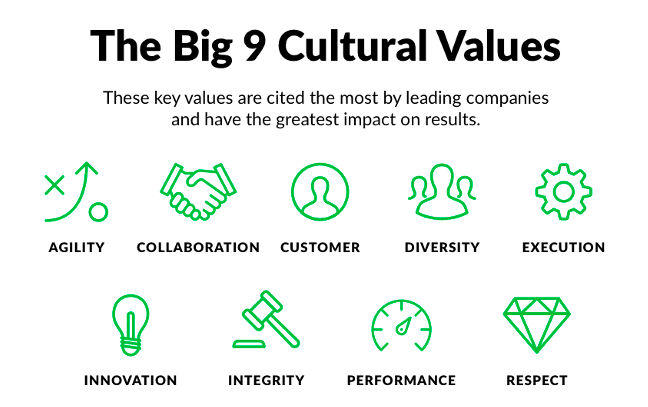A “more woke society” is calling for an end to discrimination in the workplace. Today, businesses are facing immense pressure to build diverse teams at work, with several high-profile organizations compelled to divulge their diversity and inclusion statistics. Besides being the right thing to do, cultivating diverse teams in the workplace is more than just an HR fad or an effort to look good in the public eye. There is mounting evidence that diversity and inclusion leads to tangible and measurable positive outcomes.
The benefits of having diverse teams at work
Workplace diversity isn’t exactly a new concept. In fact, a number of scholars trace the first workplace inclusivity initiative way back to 1948 when President Truman signed Executive Order 9981 to desegregate the armed services.
That said, it’s not surprising that the benefits of diversity and inclusion in the workplace have been well studied and documented in different organizations across various industries.
Let’s look at some of the most recent numbers that speak volumes about the positive outcomes that are correlated or directly attributed to workplaces having diverse teams:
- Businesses with more diverse leadership teams report 19 percent more innovation revenue.
- According to Gartner, 75 percent of companies with diverse frontline decision-making units will exceed their financial goals while currently, more gender-diverse organizations outperform their more homogenous counterparts by an average of 50 percent.
- The same Gartner study reveals that employee performance in diverse organizations is 12 percent higher than employee performance in companies with no inclusivity efforts.
- Diversity and inclusivity improve employee engagement, which in turn increases retention by 19 percent and collaboration by 57 percent.
- Glassdoor’s Job & Hiring Trends report cites diversity as one of the “Big 9 Cultural Values” in a list of core values listed by top organizations to have the most significant impact on business outcomes.

Culture is a competitive advantage among leading organizations and a vital part of building a solid workplace culture foundation is diversity (Image Source).
Clearly, diversity and inclusion are more than just trivial public relations concepts given the concrete and measurable business outcomes that have been documented over the years of research and surveys.
The question then evolves from “why do we need a diverse team” to “how do we build a diverse team?”
The role of HR in encouraging diversity
Some companies with the resources hire a Chief Diversity and Inclusion Officer to bring diversity and inclusion gold standards to an organization and work closely with HR. However, smaller businesses may not have enough financial bandwidth to pay the salary of a new senior and highly specialized leader.
This is where HR needs to step in.
Human Resources may seem like the obvious choice to spearhead the initiative to build diverse teams at work, but what’s the rationale?
Retired SHRM president and CEO Henry Jackson explained it perfectly:
“It is the role of HR to cultivate these diversity leaders throughout the company to identify, develop, and advance people from every talent pool. HR models and gives organizational leaders the lens needed to see new and non-traditional sources of talent—including candidates with unconventional education and work histories. Your diversity leaders, and the people they bring on board, will become your organization’s best ambassadors and recruiters, constantly enriching your workforce with talent that may have otherwise been overlooked.”
HR leaders and professionals who are starting a diversity initiative from scratch will find quick wins in the following low-hanging fruit tactics and strategies.
1. Redefine the hiring process
This means looking at your entire recruitment, interview, and onboarding processes and noting possible diversity blocks along the way.
For instance, former New York Times engineering manager Tessa Ann Taylor noticed how there’s a preference given to interview candidates who were referred by current employees.
HR leaders can look into the number of referrals that the company has hired and determine whether these people are coming from the same background—education, race, sex, affiliations, etc. If referrals are a showing a common factor, HR can implement measures to deprioritize employee referrals to pave the way for more diverse work teams.
Below are more tips on how HR can redefine the hiring process to intentionally hire for diversity:
- Forge networks and relationships with professional groups whose membership is composed of underrepresented talent (i.e., ethnic minorities, women, LGBTQ+, etc.).
- Institutionalize diversity metrics, such as aiming to increase the percentage of new hires that should come from underrepresented groups.
- Test your job description across several individuals in the organization to remove any requirements that could be bias. For example, descriptive cues such as “dominant”, “competitive”, “best of the best”, and “fast-paced” have been found to deter female candidates from applying.
- Involve people with different backgrounds in the interview process. Tap team members who have a different sex, gender expression, educational attainment, socio-economic standing, race, etc. to ensure balance.
2. Encourage inclusive behaviors in the workplace
Having a diverse workplace would be futile if there’s no inclusivity. “Diversity is the first and easier step, but inclusion is the key to leveraging diversity,” explains Gartner Senior Director Analyst Daniel Reina.
Without inclusive behaviors, those who were hired to intentionally create diverse teams at work will feel alienated.
Here are a few suggestions to foster inclusive behaviors:
- Link inclusivity to your overall company mission, vision, values, and goals. For example, if one of your goals is to become a recognized brand globally, then you can teach your employees that a global mindset starts at the workplace.
- Regularly hold diversity and inclusion talks and seminars in the workplace. Encourage employees who belong to underrepresented groups to share their stories. HR leaders can also invite subject matter experts periodically to give more in-depth sessions on the topic.
- Create your own anti-discrimination and equal opportunity policies.
- Celebrate occasions that matter to underrepresented groups (e.g. pride month, mental health awareness week, Blackout Tuesday).
3. Make everyone feel valued
The last thing HR leaders want is for employees to feel that your efforts to build diverse teams at work is only for show—a corporate charade to look good in the public eye. Companies who are serious about diversity and inclusion should strive to make their employees from marginalized groups feel valued and appreciated.
How can you spread employee appreciation?
- Make sure your employee recognition program is implemented across all employees equally through different ranks and departments. It’s important that recognition is both frequent and inclusive. Currently, only 25 percent of companies give recognition frequently and 34 percent give recognition that’s inclusive. These numbers can and should be better.
- The ability to send and receive recognition should be as frictionless as possible for employees. This also applies to everyone across the organization from the C-suite to managers to team members. Leaders should be able to recognize their team and employees should be able to recognize their peers. An engaging culture of recognition promotes a sense of belongingness and connection.
A joint research brief published by the Brandon Hall Group and Achievers reports the following benefits enjoyed by businesses that rate their recognition culture highly.

Organizations with highly rated recognition cultures cite better employee engagement metrics across the board (Image Source).
- Employee performance should be measured and rewarded using the same set of standards. There should be sufficient record-keeping to back up any merit-based compensation. For instance, tracking technology such as time monitoring software can standardize how productivity is defined in an organization. Empirical data deters any biases from coming into play when evaluating employee performance.
- Atop of monetary and social recognition, go beyond with your efforts. Employees who are often marginalized will feel valued at work if they feel their employers truly care about the challenges that are specific to them. For instance, releasing a statement on a national issue about racism will make people of color in an organization feel that their leadership is authentic in advocating for causes that matter to them.
4. Create a safe place where employees can talk and managers can listen
Diversity and inclusion are two concepts that are difficult to establish, and even more difficult to maintain. One employee can easily spread anti-diversity venom that can send you back to square one. These anti-diversity and anti-inclusion behaviors can go undetected—either because they are subtle or are done unintentionally.
It’s important for HR leaders to create safe spaces for employees—marginalized or not—to air grievances that are hampering an organization’s diversity and inclusivity initiatives. Having open lines of communication through pulse surveys and a 24/7 workplace chatbot is an effective way for discrimination issues to be reported and addressed in a timely manner. You want to make sure your employees feel heard and supported, so whenever you receive employee feedback, make it your priority to quickly take action – any delay can negatively impact your employee’s trust in leadership.
Birds of a different feather can flock together
Creating diverse teams at work is about recognizing that great talent knows no race, ethnicity, gender, religion, or socio-economic standing. With HR at the helm of the diversity and inclusion transformation, businesses can jumpstart diversity campaigns through the redefinition of their hiring process, encouragement of inclusive workplace behaviors, an all-in recognition and rewards program, and safe spaces for communication. Eventually, organizations will see past the differences between their employees and realize that all people, regardless of different backgrounds, can work towards a common goal—to drive their respective companies forward.
To learn more, check out Meghan M. Biro’s webinar for a timely and practical look into vital strategies for boosting community and safety with recognition.
Do you have any thoughts on this article? Share your comments below.
Business & Finance Articles on Business 2 Community
(71)








